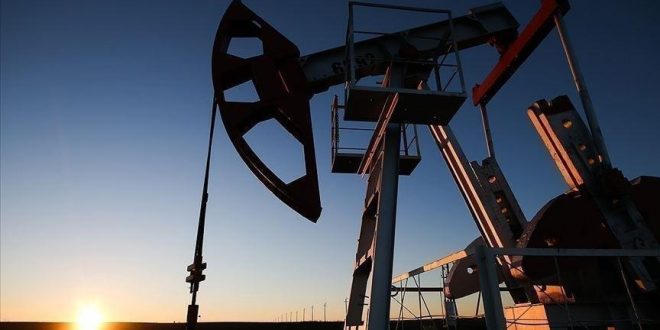America’s appetite for fossil fuels has come roaring back as the economy cranks into gear, providing a boost to energy groups but flying in the face of Washington’s drive to slash emissions.
Motorists’ return to the roads following the loosening of pandemic restrictions is pushing up fuel demand and the bottom lines of oil refiners, while a shift away from natural gas in power generation has been a boon to coal miners.
The resurgence comes as floods and wildfires in many parts of the world lay bare the destructive impacts of climate change, which a landmark report last week determined was “unequivocally” the result of human activity – mainly through the burning of fossil fuels.
Petrol demand collapsed last year as the pandemic forced people to stay home. But the vaccine rollout and a loosening of restrictions has allowed American motorists to return to roads in force this summer. Petrol consumption hit record levels of more than 10 million barrels a day early last month.
The surge in demand has pushed up fuel prices and sparked alarm in the Biden administration, which last week pressed Russia and Saudi Arabia to increase oil production to cool the rally.
The federal Energy Information Administration expects Americans to burn through a daily average of 8.8 million barrels of petrol this year, up 10 per cent on last year, but below the 9.3 million b/d consumed in 2019, largely thanks to an increase in people working from home.
‘Demand at pre-pandemic levels’
Burgeoning fuel demand has provided a boost to oil refiners that were hit hard by last year’s collapse. Companies have ramped up volumes, with many swinging back into profit after posting hefty losses last year.
“There was a significant increase in mobility in the second quarter, driving higher demand for refined products, particularly in the US,” Joseph Gorder, chief executive of Texas-based Valero, the biggest global independent refiner, told analysts recently. “In fact, we’re seeing demand for gasoline and diesel in excess of pre-pandemic levels in our US Gulf Coast and mid-continent regions.”
Greg Garland, chief executive of Phillips 66, said that demand for the oil refiner’s gasoline, jet fuel and diesel drop by 70 per cent during the early stages of the pandemic in 2020.
“People were predicting the end of the world. You had governments literally shut down their economies globally,” Garland said at the company’s headquarters in Houston last week.
Garland said that refining companies were still under pressure. “Volumes are improving substantially,” he said, “but we need the whole world to get back to where it was.”
Decline forecast for 2022
US coal demand is also rising sharply, but for a different reason. Climbing natural gas prices have spurred power producers to burn more of the dirtiest fossil fuel once again. The EIA estimates that coal consumption in US electricity generation will jump 17 per cent to 511.7 short tons this year.
It means that as the US president Joe Biden battles to push sweeping new clean energy legislation through Congress, his first year as president will coincide with a resurgence in the use of coal.
EIA forecasts coal consumption to decline again in 2022, part of a long-term trend driven by the retirement of older thermal power plants. But for now, producers are enjoying the respite. Peabody Energy, the US’s biggest coal mining company, reported sales to US power plants jumped more than 20 per cent in the second quarter.
“In the US, thermal coal market indicators are favourable,” James Grech, chief executive of Peabody, told analysts.
While refiners and coal producers welcome the spike in fossil fuel consumption, it goes against the grain in Washington, where the president wants to cut emissions in half by the end of the decade from 2005 levels by weaning America off oil and coal with a shift to electric vehicles and renewable electricity.
Emissions from energy use will rise 7 per cent this year, according to the EIA, though they will remain below 2019 levels, having fallen 11 per cent last year.
Steve Nalley, EIA acting administrator, said there would be “significant” growth in carbon emissions from the energy sector as the economy opened back up, but said the agency did not anticipate them returning to pre-pandemic levels in the short term. – Copyright The Financial Times Limited 2021

 Iran Energy News Oil, Gas, Petrochemical and Energy Field Specialized Channel
Iran Energy News Oil, Gas, Petrochemical and Energy Field Specialized Channel



